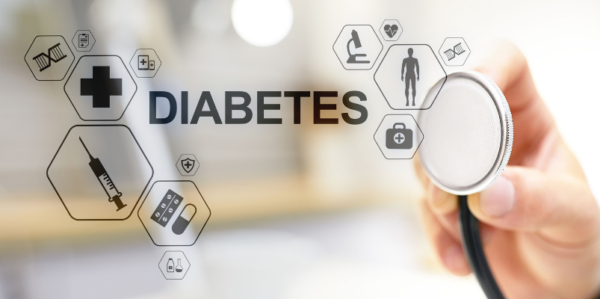Introduction
For individuals managing diabetes, the holiday season can be a tricky time. With sweet treats, family feasts, and festive drinks around every corner, it’s easy to feel overwhelmed. This blog shares practical strategies to enjoy the holidays while keeping blood sugar levels in check.
The Holiday Challenge for Diabetes Management
The abundance of high-carb and high-sugar foods during the holidays can lead to blood sugar spikes, making it harder to manage diabetes. However, with a bit of planning and mindfulness, you can indulge while staying on track with your health goals.
Tips for Managing Diabetes During the Holidays
- Plan Your Meals: Stick to your meal plan as closely as possible. If you’re attending a party, have a balanced snack beforehand.
- Portion Control: Savor small portions of your favorite holiday dishes instead of overloading your plate.
- Stay Hydrated: Drinking water can help stabilize blood sugar levels and curb overeating.
- Monitor Blood Sugar: Keep track of your levels more frequently during this period to make necessary adjustments.
Closing Thoughts
The holidays should be a time of joy and connection, not stress about your health. With the right strategies, you can navigate the season confidently while keeping your diabetes well-managed.
LETS GET HEALTHY TOGETHER: Join Optimized Humans to access tailored meal plans and fitness routines that support your health goals. Use code NEWYEARS25 for a discount on your subscription.
Understanding Diabetes: The Importance of Awareness, Prevention, and Exercise
November is National Diabetes Awareness Month, a time to increase understanding about diabetes and encourage lifestyle changes that can help prevent and manage this chronic condition. Diabetes affects millions of people worldwide, but through education and proactive measures, you can lower your risk and lead a healthier, more active life. In this post, we’ll explore what diabetes is, how exercise plays a crucial role in prevention and management, some important statistics on diabetes and movement, and provide a 3-day workout plan to get you started on the right path.
What is Diabetes?
Diabetes is a chronic condition that affects how your body turns food into energy. When you eat, your body breaks down the food into sugar (glucose), which is then released into your bloodstream. In response, your pancreas produces insulin, which helps your body’s cells use that glucose for energy. In people with diabetes, either the body doesn’t make enough insulin or it can’t use insulin effectively, leading to high blood sugar levels.
There are three main types of diabetes:
- Type 1 Diabetes: An autoimmune condition where the body’s immune system attacks the cells in the pancreas that make insulin.
- Type 2 Diabetes: The most common form of diabetes, where the body becomes resistant to insulin, and the pancreas cannot make enough to compensate.
- Gestational Diabetes: Diabetes that occurs during pregnancy and usually resolves after giving birth, although it increases the mother’s risk of developing Type 2 diabetes later in life.
Managing diabetes is crucial to avoid complications such as heart disease, kidney failure, vision loss, and nerve damage. Fortunately, regular physical activity and a healthy lifestyle can help prevent Type 2 diabetes and improve the management of all forms of the condition.
How Exercise is Vital for Diabetes Management
Exercise is a key factor in preventing and managing diabetes. Physical activity helps regulate blood sugar levels, improves insulin sensitivity, and reduces the risk of developing Type 2 diabetes. For those already living with diabetes, exercise can help manage blood glucose levels and reduce the risk of complications.
Here’s why exercise is essential for diabetes:
- Improved Insulin Sensitivity: Regular exercise makes your muscles more sensitive to insulin, allowing your body to use blood sugar more effectively.
- Blood Sugar Control: Physical activity helps lower blood glucose levels and can keep them stable for hours after exercise.
- Weight Management: Being overweight is a major risk factor for Type 2 diabetes. Exercise helps burn calories, maintain a healthy weight, and reduce body fat, especially around the abdomen.
- Cardiovascular Health: Diabetes significantly increases the risk of heart disease. Exercise strengthens the heart, lowers blood pressure, and improves cholesterol levels.
- Mental Health Benefits: Managing a chronic condition like diabetes can be mentally challenging. Exercise releases endorphins that improve mood, reduce stress, and boost mental well-being.
Diabetes and Physical Activity: Eye-Opening Statistics
The rise of diabetes worldwide has been alarming, especially as lifestyles have become more sedentary. Here are some key statistics that highlight the need for increased movement:
- According to the International Diabetes Federation (IDF), approximately 537 million adults (ages 20-79) were living with diabetes in 2021, and this number is expected to rise to 643 million by 2030.
- Type 2 diabetes accounts for around 90-95% of all diabetes cases, and a sedentary lifestyle is one of the main contributing factors.
- The Centers for Disease Control and Prevention (CDC) reports that 1 in 3 adults in the U.S. have prediabetes, a condition where blood sugar levels are higher than normal but not yet high enough to be diagnosed as diabetes.
- Regular physical activity can reduce the risk of developing Type 2 diabetes by up to 58%, according to the Diabetes Prevention Program (DPP).
- Only about 22% of people with diabetes meet the recommended physical activity guidelines, despite the significant benefits it offers for blood sugar control and overall health.
It’s clear that incorporating regular physical activity into your lifestyle is one of the best ways to prevent and manage diabetes.
3-Day Workout Program for Diabetes Management
To help you get started on your fitness journey, here’s a simple 3-day workout program designed for people looking to manage or prevent diabetes. This program includes a mix of cardiovascular exercise, strength training, and flexibility work to improve overall health.
| Day | Exercise | Sets | Reps | Rest |
|---|---|---|---|---|
| Day 1: Cardio & Lower Body | ||||
| Brisk Walking or Cycling | 1 | 30 min | – | |
| Bodyweight Squats | 3 | 15 | 60 sec | |
| Step-Ups (with or without weights) | 3 | 12 per leg | 60 sec | |
| Calf Raises | 3 | 15 | 60 sec | |
| Hamstring Stretch | 3 | 30 sec | – | |
| Day 2: Upper Body Strength | ||||
| Push-ups (on knees if needed) | 3 | 10 | 60 sec | |
| Dumbbell Rows (or Resistance Bands) | 3 | 12 | 60 sec | |
| Shoulder Press | 3 | 12 | 60 sec | |
| Plank | 3 | 30 sec | 60 sec | |
| Chest Stretch | 3 | 30 sec | – | |
| Day 3: Full-Body & Core | ||||
| Jumping Jacks or Marching in Place | 3 | 1 min | 30 sec | |
| Lunges | 3 | 12 per leg | 60 sec | |
| Russian Twists | 3 | 15 per side | 30 sec | |
| Glute Bridges | 3 | 15 | 60 sec | |
| Child’s Pose Stretch | 3 | 30 sec | – |
This program is designed to be gentle yet effective for managing blood sugar levels and building strength. By combining cardiovascular activity with strength training and flexibility exercises, you’ll create a balanced routine that supports overall health and diabetes management.
Final Thoughts: Take Control of Your Health This Diabetes Awareness Month
Diabetes is a serious condition, but with the right lifestyle changes, it can be managed, and in many cases, prevented. By incorporating regular exercise, maintaining a healthy diet, and staying informed, you can reduce your risk of developing Type 2 diabetes and improve your overall well-being.
Let this Diabetes Awareness Month be a reminder to take charge of your health. Whether you’re looking to prevent diabetes, manage the condition, or simply live a healthier lifestyle, staying active is key to achieving your goals.
Ready to take your fitness journey to the next level? Join Optimized Humans today and gain access to personalized workout plans, nutritional guidance, and a supportive community to help you manage your health. Use the code MOVEMBERFIT for an exclusive discount on your subscription. Take control of your health and start optimizing your life today!
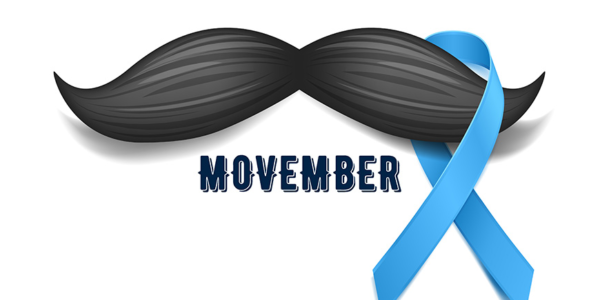
Movember: Raising Awareness for Health and the Importance of Fitness
Movember is more than just a month of growing mustaches; it’s a movement dedicated to raising awareness about men’s health, particularly in areas like prostate cancer, testicular cancer, and mental health. It’s a time when men are encouraged to take control of their health and well-being, which includes not only monitoring their physical health but also maintaining an active lifestyle. In this post, we’ll dive into the origins of Movember, why exercise is vital to your health, some compelling statistics on fitness and movement, and a 3-day workout plan to get you moving.
The Origins of Movember
Movember started in 2003 when two friends in Melbourne, Australia, joked about bringing the mustache back into style. What began as a light-hearted challenge quickly turned into a serious cause. Inspired by a friend’s mother who was fundraising for breast cancer, they decided to give the mustache growing challenge a purpose: raising awareness for men’s health, particularly prostate cancer.
Today, Movember has grown into a global movement with millions of participants from around the world. By growing mustaches and participating in fundraising activities, men (and women) help bring attention to critical health issues that men face, such as testicular cancer, mental health struggles, and physical inactivity. It’s a chance for men to start conversations about health, undergo checkups, and encourage each other to lead healthier lives.
Why Exercise is Vital to Your Health
Exercise is a key factor in preventing many of the health issues that Movember aims to raise awareness about. Regular physical activity helps maintain a healthy weight, improve cardiovascular health, reduce the risk of chronic diseases, and improve mental health.
Here are some specific ways exercise positively impacts men’s health:
- Reduces the Risk of Prostate and Testicular Cancer: Studies have shown that regular exercise can help lower the risk of prostate cancer and improve outcomes for those diagnosed. Exercise also improves testicular health by promoting blood flow and reducing stress levels.
- Boosts Mental Health: Physical activity is a natural antidepressant. Exercise releases endorphins that improve mood, reduce anxiety, and help manage stress.
- Improves Cardiovascular Health: Cardiovascular diseases are among the leading causes of death for men. Exercise strengthens the heart, improves blood circulation, and lowers the risk of heart disease.
Statistics on Fitness and Movement
The modern lifestyle often leads to a sedentary way of living, which has contributed to rising rates of chronic diseases. Here are some important statistics to highlight the importance of staying active:
- According to the World Health Organization (WHO), more than 23% of adults are not active enough. This sedentary behavior increases the risk of heart disease, obesity, diabetes, and certain cancers.
- Physical inactivity is the fourth leading risk factor for global mortality, responsible for about 3.2 million deaths annually, according to WHO.
- The American Heart Association (AHA) recommends that adults engage in at least 150 minutes of moderate-intensity aerobic exercise, or 75 minutes of vigorous exercise, per week to maintain good health.
- Men who are physically active are up to 50% less likely to develop serious chronic conditions, such as heart disease, compared to inactive men.
By incorporating regular physical activity into your routine, you can drastically improve your health, reduce your risk of chronic illness, and improve mental well-being.
3-Day Workout Program to Get You Moving
Here’s a simple but effective 3-day workout program designed to get you moving, boost your strength, and improve your cardiovascular health. This program requires minimal equipment and can be done at home or in the gym. Remember to warm up before each session and cool down afterward with some light stretching.
| Day | Exercise | Sets | Reps | Rest |
|---|---|---|---|---|
| Day 1: Full-Body Strength | ||||
| Squats | 3 | 12 | 60 sec | 45 sec |
| Push-ups | 3 | 10 | 60 sec | 30 sec |
| Dumbbell Rows (or Resistance Band Rows) | 3 | 12 | 60 sec | 30 sec |
| Plank | 3 | 30 sec | 60 sec | 15 sec |
| Lunges | 3 | 12 per leg | 60 sec | 30 sec |
| Day 2: Cardio & Core | ||||
| Jumping Jacks | 3 | 1 min | 30 sec | 20 sec |
| Mountain Climbers | 3 | 30 sec | 30 sec | 20 sec |
| Bicycle Crunches | 3 | 15 per side | 30 sec | 20 sec |
| Burpees | 3 | 10 | 60 sec | 20 sec |
| Russian Twists | 3 | 20 | 30 sec | 20 sec |
| Day 3: Lower Body & Stretching | ||||
| Glute Bridges | 3 | 15 | 60 sec | 30 sec |
| Wall Sit | 3 | 45 sec | 60 sec | 30 sec |
| Calf Raises | 3 | 15 | 60 sec | 30 sec |
| Forward Fold Stretch | 3 | 30 sec | – | 15 sec |
| Hip Flexor Stretch | 3 | 30 sec per side | – | 15 sec |
This simple program is designed to give you a mix of strength, cardiovascular, and flexibility training. The combination of exercises targets all major muscle groups and keeps your body moving, whether you’re just getting started or looking to maintain a fitness routine during Movember.
Final Thoughts: Get Active This Movember
Movember is a reminder that men’s health matters. While growing a mustache is a fun way to raise awareness, taking steps to improve your health is equally important. Incorporating exercise into your routine can help you lower your risk for serious health conditions, improve your mental well-being, and set you up for a healthier life.
So, why not use Movember as a time to not only raise awareness but also take charge of your own health? Whether you’re committing to regular workouts, going for daily walks, or making other healthy lifestyle changes, every step counts.
Ready to optimize your health even further? Sign up for Optimized Humans and gain access to personalized workout plans, meal recommendations, and a supportive fitness community. Use the code MOVEMBERFIT for a special discount when you subscribe! Join us this Movember and take the first step towards a healthier, more active you. https://www.trainerize.me/profile/siiib/Optimized.Humans/
Hello Optimized Humans! My name is Sydney Brisbane your Optimal Wellness Specialist and I have dedicated most of my life to helping people like you maximize their human potential through personalised workouts, meal plans, and curated schedules to hit their lifestyle goals. I do this via my app, it offers a comprehensive range of features to help you achieve your wellness goals. Whether you’re looking to improve your fitness, nutrition, or overall well-being, this user’s guide will provide you with a detailed walkthrough on how to maximize the value of your Optimized Humans subscription.
Getting Started
- Contact Me
-
- Send me an email sydney@optimizedhumans.life requesting a discovery call.
- Message me on any social media platform with your name, phone number, or email address.
- I will send you a unique link dedicated to your profile
- Last you can download the app on either store IOS or Android. Then send me a email or direct message, so I can build and link your profile.
- Download and Install the App:
- Available on both iOS and Android platforms, download the Optimized Humans app from the App Store or Google Play.
- Open the app and sign up using your email address or social media account.
- Profile Setup:
- Complete your profile by entering your personal information, fitness goals, and current fitness level. This will help the app tailor its recommendations to your specific needs.
- Complete your waivers and questionnaire so that I can create the best workout for you experience level and needs.
- Set your preferences for workout types, dietary restrictions, and any other relevant details.
Navigating the Dashboard
The dashboard is your home screen, providing a quick overview of your daily activities, progress, and personalized recommendations.
- Daily Summary:
- View a snapshot of your daily stats, including steps taken, calories burned, and active minutes.
- Access your workout schedule and meal plan for the day.
- Progress Tracking:
- Track your fitness progress over time with charts and graphs. Monitor your weight, body measurements, hear rate, calorie intake, calorie expenditure, and performance improvements.
Personalized Workout Plans
One of the standout features of the Optimized Humans app is its ability to create personalized workout plans tailored to your goals and fitness level.
- Setting Up Your Workout Plan:
- Depending on which program you to choose to be a part of, I will either create a personalised program for you, or you can create your own in our On-Demand Library.
- If you choose to create your own, follow the next steps below:
- Go to the “Workouts” section and select “Create a New Plan.”
- Choose your fitness goal (e.g., weight loss, muscle gain, endurance) and specify your preferred workout types (e.g., cardio, strength training, yoga).
- Set your workout frequency and duration.
- Accessing Your Workouts:
- Your personalized workout plan will be displayed in the “Workouts” section.
- Follow along with detailed video tutorials and step-by-step instructions for each exercise.
- Log your workouts to track your progress and receive feedback.
- Outdoor and Home Workouts:
- Explore a variety of workouts that can be performed outdoors or at home with minimal equipment.
- Use the GPS tracking feature for outdoor runs, walks, and cycling routes.
Nutrition and Meal Planning
Optimize your diet with personalized meal plans and nutrition tracking.
- Setting Up Your Meal Plan:
- Option 1: Just as the same as your workout plan, we will create you a “Smart Meal Plan” with our food library.
- You will give us all the nutritional information that you are interested in or any allergies you may have and we will create a “Smart Meal Plan” dedicated to fit your needs.
- You will receive a customized meal plan with breakfast, lunch, dinner, and snack options.
- If you do not like a meal you can swap it out for another meal at anytime.
- Option 2: In the “Nutrition” section, select “Create a Meal Plan.”
- Enter your dietary preferences, restrictions, and goals (e.g., calorie intake, macronutrient distribution).
- Receive a customized meal plan with breakfast, lunch, dinner, and snack options.
- Option 1: Just as the same as your workout plan, we will create you a “Smart Meal Plan” with our food library.
- Accessing Recipes:
- Browse a vast library of healthy recipes tailored to your dietary needs.
- Save your favorite recipes and add ingredients to your shopping list.
- Tracking Your Nutrition:
- Log your meals and snacks to monitor your calorie and nutrient intake.
- Use the barcode scanner to quickly add packaged foods to your diary.
- We advise that you use myfitnesspal to track your calories.
Recovery and Wellness
Recovery is a crucial part of any fitness journey. The app offers features to help you rest, recover, and maintain overall wellness.
- Guided Stretching and Yoga:
- Access guided stretching routines and yoga sessions designed to improve flexibility and promote relaxation.
- Follow along with video instructions to ensure proper form and technique.
- Sleep Tracking:
- Track your sleep patterns to ensure you’re getting adequate rest.
- Set sleep goals and receive tips for improving sleep quality.
- Be sure to link your tracking device to the app.
- Mindfulness and Meditation:
- Explore guided meditation sessions to reduce stress and improve mental clarity.
- Practice mindfulness exercises to enhance your overall well-being.
Community and Challenges
Stay motivated by connecting with other users and participating in challenges.
- Joining the Community:
- Access the “Community” section to connect with other Optimized Humans users.
- Share your progress, post updates, and find workout buddies.
- Participating in Challenges:
- Join community challenges to stay motivated and compete with other users.
- Track your performance in real-time and earn badges and rewards.
Support and Resources
If you need assistance or want to learn more, the app provides comprehensive support and resources.
- Help Center:
- Please feel free to reach out to me or your coach with any questions first.
- Access the Help Center for FAQs, tutorials, and troubleshooting guides.
- Contact customer support for personalized assistance.
- Educational Resources:
- Browse articles, videos, and expert tips on fitness, nutrition, and wellness.
- Stay informed with the latest health trends and research.
Conclusion
The Optimized Humans app is a powerful tool designed to support your health and fitness journey. By leveraging its personalized workout plans, nutrition tracking, recovery features, and community support, you can achieve your wellness goals more effectively. Follow this guide to get the most out of your subscription and embrace a healthier, more optimized lifestyle. Download the Optimized Humans app today and start your journey towards a better you!
Exclusive OFFER! FREE 14 DAY TRIAL!
CLICK LINK BELOW
https://www.trainerize.me/profile/siiib/?planGUID=28a1d9e4193241a59dd3afaa62b54837

Summer is the perfect time to enjoy fresh, vibrant, and nutritious meals that are both delicious and healthy. The Optimized Humans app offers a plethora of recipes designed to keep you energized and satisfied during the hot months. Here are the top 10 healthy summer recipes you can find in our app, perfect for meals and snacks that celebrate the best of the season.
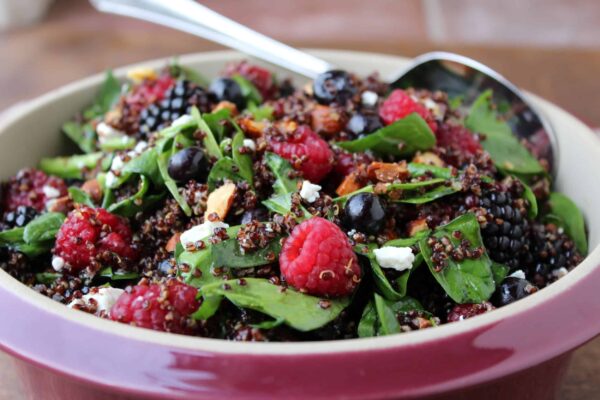
1. Berry Quinoa Salad
Ingredients:
- 1 cup quinoa
- 2 cups water
- 1 cup fresh strawberries, sliced
- 1 cup fresh blueberries
- 1/4 cup chopped fresh mint
- 1/4 cup crumbled feta cheese
- 2 tbsp olive oil
- 1 tbsp balsamic vinegar
- Salt and pepper to taste
Instructions:
- Rinse quinoa under cold water. In a saucepan, bring quinoa and water to a boil. Reduce heat, cover, and simmer for 15 minutes until water is absorbed.
- In a large bowl, combine cooked quinoa, strawberries, blueberries, mint, and feta.
- In a small bowl, whisk together olive oil, balsamic vinegar, salt, and pepper. Pour over salad and toss to combine.
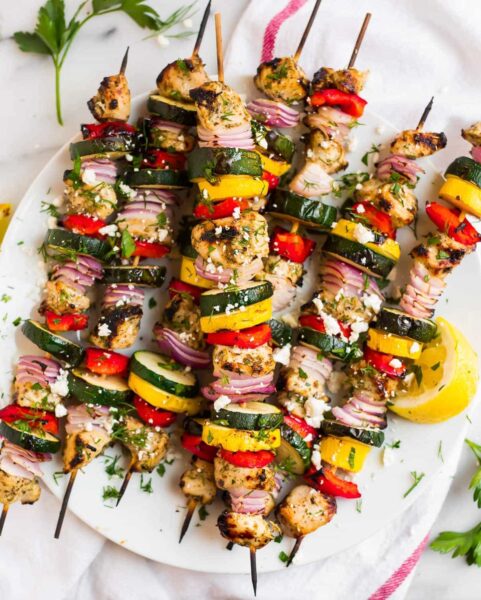
2. Grilled Chicken and Veggie Skewers
Ingredients:
- 2 boneless, skinless chicken breasts, cut into chunks
- 1 red bell pepper, cut into chunks
- 1 yellow bell pepper, cut into chunks
- 1 zucchini, sliced
- 1 red onion, cut into chunks
- 2 tbsp olive oil
- 2 tbsp lemon juice
- 1 tsp dried oregano
- Salt and pepper to taste
Instructions:
- Preheat grill to medium-high heat.
- In a bowl, mix olive oil, lemon juice, oregano, salt, and pepper. Add chicken and veggies, tossing to coat.
- Thread chicken and veggies onto skewers.
- Grill skewers for 10-12 minutes, turning occasionally, until chicken is cooked through and veggies are tender.

3. Watermelon and Feta Salad
Ingredients:
- 4 cups cubed watermelon
- 1/2 cup crumbled feta cheese
- 1/4 cup fresh mint leaves, chopped
- 2 tbsp olive oil
- 1 tbsp balsamic glaze
- Salt and pepper to taste
Instructions:
- In a large bowl, combine watermelon, feta, and mint.
- Drizzle with olive oil and balsamic glaze.
- Season with salt and pepper and toss gently to combine.

4. Avocado and Black Bean Wraps
Ingredients:
- 1 avocado, sliced
- 1 can black beans, drained and rinsed
- 1 cup shredded lettuce
- 1/2 cup cherry tomatoes, halved
- 1/4 cup red onion, thinly sliced
- 4 whole wheat tortillas
- 2 tbsp lime juice
- 2 tbsp chopped cilantro
- Salt and pepper to taste
Instructions:
- In a bowl, mix black beans, lime juice, cilantro, salt, and pepper.
- Lay tortillas flat and layer with lettuce, black bean mixture, avocado, tomatoes, and red onion.
- Roll up tortillas and serve immediately.

5. Greek Yogurt and Berry Parfait
Ingredients:
- 2 cups Greek yogurt
- 1 cup granola
- 1 cup mixed fresh berries (strawberries, blueberries, raspberries)
- 2 tbsp honey
Instructions:
- In a glass or bowl, layer Greek yogurt, granola, and berries.
- Drizzle with honey.
- Repeat layers and serve immediately.
Conclusion
These top 5 healthy summer recipes from the Optimized Humans app are perfect for enjoying the vibrant flavors of the season while keeping your nutrition on track. Download the Optimized Humans app to access these recipes and many more, along with personalized nutrition plans and expert advice to help you stay healthy and fit all summer long. Enjoy the deliciousness of summer and fuel your body with the best nutrients nature has to offer!

June, a month dedicated to unleashing the full potential of our brainpower and igniting awareness for Alzheimer’s disease. As we embark on this journey of enlightenment and advocacy, let’s explore how we can channel our collective energy to raise awareness, support research, and empower those affected by Alzheimer’s. Join us as we delve into actionable strategies to make a difference this Alzheimer’s Awareness Month.
Raising Awareness:
Awareness is the first step towards meaningful change. Spread the word about Alzheimer’s disease and its impact on individuals, families, and communities. Share informative resources, personal stories, and advocacy initiatives on social media platforms, in your local community, and among your networks. By raising awareness, we can shine a light on Alzheimer’s and inspire others to join the fight.
Supporting Research:
Research is the cornerstone of progress in the fight against Alzheimer’s. Get involved in fundraising events, volunteer opportunities, and advocacy campaigns to support organizations dedicated to Alzheimer’s research. Your contributions can fund groundbreaking studies, clinical trials, and innovative treatments that bring us closer to a world without Alzheimer’s.
Empowering Those Affected:
Alzheimer’s affects millions of individuals and their loved ones worldwide. Show your support by offering compassion, understanding, and practical assistance to those living with Alzheimer’s and their caregivers. Volunteer at local memory care facilities, participate in support groups, or simply lend a listening ear to someone in need. Your kindness and empathy can make a world of difference in the lives of those affected by Alzheimer’s.
Taking Action for Change:
Action speaks louder than words. Advocate for policy changes, increased funding for Alzheimer’s research, and improved access to care and support services. Write letters to lawmakers, participate in advocacy events, and engage with advocacy organizations to amplify your voice and drive meaningful change at local, national, and global levels.
As we ignite awareness for Alzheimer’s this June, let’s unleash the full power of our brainpower to make a difference. By raising awareness, supporting research, empowering those affected, and taking action for change, we can create a future where Alzheimer’s no longer robs individuals of their memories and dignity. Together, let’s stand united in the fight against Alzheimer’s and ignite a spark of hope for generations to come.
Thank you for taking this journey with us. Hopefully this has made you more aware of the necessity of good health. If you can make an impact throughout Alzheimer’s and Brain Awareness Month and Maximize Your Human Potential!

We are in the third week battling against Alzheimer’s and cognitive decline takes center stage. In this month dedicated to raising awareness, let’s explore how we can harness the power of mind over matter to combat these formidable adversaries. Join us as we dive into effective strategies to preserve cognitive function and champion brain health.
Navigating Alzheimer’s:
Alzheimer’s disease poses a significant challenge to individuals and communities worldwide. However, armed with knowledge and determination, we can navigate this journey with resilience. Explore treatment options such as cognitive enhancers and lifestyle interventions to manage symptoms and enhance quality of life. Additionally, participate in clinical trials to contribute to the advancement of Alzheimer’s research and potential breakthroughs.
Fueling Brain Resilience:
Just as a car needs fuel to run smoothly, our brains require nourishment to function optimally. Adopt a brain-healthy diet rich in nutrients like antioxidants, omega-3 fatty acids, and vitamins B and D. Incorporate foods such as fatty fish, leafy greens, nuts, and berries to support cognitive resilience and protect against age-related cognitive decline.
Empowering Early Detection:
Early detection is critical in the fight against Alzheimer’s and cognitive decline. Embrace the power of blood tests to identify biomarkers associated with brain health and cognitive function. Routine screenings for cholesterol, glucose, and inflammation levels can provide valuable insights and prompt proactive interventions to mitigate risk factors and promote brain resilience.
Insights from Genetic Profiling:
Genetic profiling offers personalized insights into individual susceptibility to Alzheimer’s disease and cognitive decline. By understanding genetic risk factors, individuals can implement targeted interventions to optimize brain health and reduce the likelihood of developing cognitive impairments. Explore lifestyle modifications, including regular exercise, stress management, and cognitive stimulation, to bolster brain resilience and support overall well-being.
Conclusion:
As we embark on June’s battle against Alzheimer’s and cognitive decline, let’s remember that mind over matter can be a powerful force for change. By navigating Alzheimer’s with resilience, fueling brain resilience with a nutrient-rich diet, empowering early detection through blood tests, and gaining insights from genetic profiling, we can tilt the odds in favor of cognitive vitality. Together, let’s embrace the challenge and pave the way for a future where cognitive health flourishes.
Stay tuned for our last actionable insights and tips throughout Alzheimer’s and Brain Awareness Month!
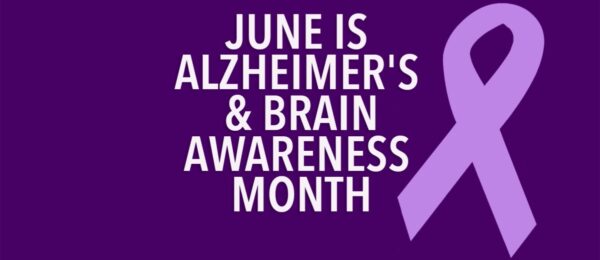
Welcome to June, the month dedicated to unlocking minds and fighting against Alzheimer’s and brain fog. As we delve into this crucial awareness campaign, let’s explore effective strategies to combat Alzheimer’s, enhance brain health, and reclaim our cognitive vitality.
Tackling Alzheimer’s:
Alzheimer’s disease poses a significant challenge to individuals and families worldwide. However, advancements in treatments offer hope. From pharmaceutical interventions to lifestyle modifications, there’s a range of approaches to explore. Consult with healthcare professionals to explore options like acetylcholinesterase inhibitors or memantine, which can help manage symptoms and slow disease progression.
Harnessing the Power of Vitamins:
Vitamins play a crucial role in brain health. Incorporating nutrient-rich foods and supplements can provide essential support. Vitamin E, for instance, acts as an antioxidant, protecting brain cells from damage. Omega-3 fatty acids, found in fish oil supplements, promote brain function and may reduce the risk of cognitive decline. Ensure you’re getting an adequate intake of vitamins B6, B12, and folate, as deficiencies have been linked to cognitive impairment.
Blood Tests for Early Detection:
Early detection of Alzheimer’s is key to effective management. Blood tests are emerging as promising tools for diagnosing Alzheimer’s disease, offering a non-invasive and cost-effective alternative to traditional methods. Biomarkers such as amyloid beta and tau proteins can indicate the presence of Alzheimer’s pathology years before symptoms manifest. Speak with your healthcare provider about incorporating these tests into your wellness routine for proactive monitoring.
Unlocking Genetic Insights:
Genetic predisposition plays a role in Alzheimer’s risk. DNA tests, such as genetic screening for the APOE ε4 allele, can provide valuable insights into individual susceptibility. While genetic factors influence Alzheimer’s risk, they don’t determine destiny. Armed with this knowledge, individuals can adopt lifestyle measures to mitigate risk factors and promote brain health.
This June, let’s unite in the fight against Alzheimer’s and brain fog. By embracing treatments, optimizing vitamin intake, leveraging blood tests for early detection, and unlocking genetic insights, we can empower ourselves in the battle for cognitive vitality. Together, we can unlock minds and pave the way for a brighter, brain-healthy future.
Stay tuned for more insights and actionable tips throughout Alzheimer’s and Brain Awareness Month!
 Hey my Optimized Humans,
Hey my Optimized Humans,
As we gather once again in our digital sanctuary, I’m compelled to delve into a topic close to my heart: Alcohol Awareness Month. This isn’t just another awareness campaign—it’s a chance for us to confront the highs and lows of substance use, to navigate the complexities of our relationship with alcohol and drugs with honesty and compassion.
So, join me on this journey as we explore the depths of social bonding, the pitfalls of addiction, and the path to holistic well-being. Together, as we shed light on the shadows of substance abuse, let’s empower each other to thrive and embrace life to its fullest.
Welcome to a conversation that transcends stigma and judgment, where empathy and understanding reign supreme. Let’s dive in, my friends, and navigate the winding path of Alcohol Awareness Month together.
Alcohol Awareness Month: Understanding the Ups and Downs of Substance Use
As April unfolds, it brings with it a poignant reminder: Alcohol Awareness Month. In a society where alcohol consumption is often intertwined with social gatherings, celebrations, and even daily routines, it’s essential to pause and reflect on the multifaceted impact of alcohol and drug use on our lives. From the highs of camaraderie to the lows of addiction and health consequences, the journey through substance use is riddled with complexities that warrant our attention.
The Ups: Exploring the Social Facets of Alcohol and Drug Use
1. Social Bonding and Connection: For many, alcohol serves as a social lubricant, easing inhibitions and fostering camaraderie. Whether sharing a drink with friends after work or toasting to milestones at celebratory events, alcohol often acts as a facilitator of social interaction and connection.
2. Escapism and Stress Relief: In times of stress or emotional turmoil, alcohol and drugs may offer a temporary escape from reality. The euphoria induced by substances can provide a respite from life’s challenges, offering a brief reprieve from anxiety, depression, or other emotional burdens.
3. Cultural and Ritualistic Significance: In various cultures and traditions, alcohol holds deep-rooted significance, often symbolizing hospitality, celebration, or religious rituals. From wine in religious ceremonies to traditional toasts at weddings, alcohol plays a central role in many cultural practices, reinforcing social bonds and traditions.
The Downs: Confronting the Mental and Physical Health Challenges
1. Addiction and Dependency: Perhaps the most significant downside of alcohol and drug use is the potential for addiction and dependency. What may start as occasional social drinking or recreational drug use can spiral into a destructive cycle of dependence, impacting every aspect of one’s life, from relationships to employment and overall well-being.
2. Mental Health Implications: Alcohol and drug abuse can exacerbate existing mental health conditions or precipitate new ones. From depression and anxiety to psychosis and cognitive impairment, substance abuse can wreak havoc on mental health, leading to a vicious cycle of self-medication and worsening symptoms.
3. Physical Health Consequences: The toll of alcohol and drug use on physical health is undeniable. From liver disease and cardiovascular complications to impaired immune function and increased risk of cancer, the ramifications of substance abuse can be severe and life-threatening.
Navigating the Complexities: Cultivating Awareness and Empowerment
As we navigate the ups and downs of alcohol and drug use during this awareness month, it’s essential to approach the topic with compassion, understanding, and a commitment to holistic well-being. Rather than resorting to stigma or judgment, let’s foster open dialogue and awareness surrounding substance use, acknowledging its complexities and offering support to those in need.
Healthy Coping Strategies:
1. Seeking Support: If you or someone you know is struggling with alcohol or drug use, reaching out for support is the first step toward healing. Whether through therapy, support groups, or trusted loved ones, know that you are not alone, and help is available.
2. Exploring Alternative Coping Mechanisms: Discover healthy coping mechanisms that offer solace and relief without the need for substances. Engage in activities that bring you joy, such as exercise, meditation, creative expression, or spending time in nature.
3. Prioritizing Self-Care: Cultivate a lifestyle that prioritizes self-care and overall well-being. Nourish your body with nutritious food, prioritize sleep and relaxation, and engage in activities that promote mental and emotional balance.
As we honor Alcohol Awareness Month, let’s commit to fostering a culture of awareness, empathy, and support surrounding substance use. By understanding the ups and downs of alcohol and drug use and embracing healthy coping strategies, we empower ourselves and our communities to navigate this complex terrain with resilience and compassion. Together, let’s strive for a future where individuals can live their lives to the fullest, free from the grips of addiction and empowered to embrace wellness in all its forms.

As April dawns upon us, it brings with it a poignant reminder: Stress Awareness Month. In a world where the hustle and bustle often blur the lines between urgency and serenity, it’s essential to pause and reflect on the silent yet significant struggle many of us face daily. Stress has become an unwelcome companion for countless individuals, affecting our mental, emotional, and physical well-being.
In this introductory piece, we embark on a journey to unravel the layers of stress, exploring its roots, manifestations, and impacts in our modern lives. Join me as we delve into the depths of this intricate phenomenon, shedding light on its prevalence and the imperative need to address it with empathy and understanding.
In the weeks to come, we’ll navigate through the labyrinth of stress, equipping ourselves with knowledge and strategies to combat its pervasive influence. Together, let’s embark on a transformative quest toward greater self-awareness and resilience in the face of adversity.
Stay tuned as we embark on this enlightening journey, seeking solace amidst the chaos and fostering a culture of compassion and support. It’s time to unveil the silent struggle and embrace the path to a more balanced and fulfilling life.
Are you ready to embark on this journey with me? Let’s navigate through the nuances of stress, arm ourselves with insights, and emerge stronger, wiser, and more resilient than ever before.
Unveiling the Silent Struggle
As April unfolds, casting its spotlight on Stress Awareness Month, it beckons us to pause and confront a prevalent yet often overlooked challenge: stress in the modern world. In the relentless pursuit of success, fulfillment, and societal expectations, stress has stealthily woven its threads into the fabric of our lives. It’s time to unravel the layers, understand its nuances, and, most importantly, empower ourselves with strategies to navigate this complex terrain.
Ways of Understanding Stress in the Modern World:
- Digital Overload and Constant Connectivity: The digital age has ushered in unprecedented connectivity, but it also brings a relentless barrage of information, notifications, and social comparisons. Our constant engagement with screens and the pressure to stay connected can contribute significantly to stress. Recognizing the impact of our digital interactions is the first step in understanding the modern dynamics of stress.
- Work-Life Integration Challenges: The traditional boundaries between work and personal life have blurred, ushering in the era of work-life integration. While this flexibility offers opportunities, it also poses challenges in establishing clear delineations. Understanding the demands of our multifaceted roles and acknowledging the need for balance is crucial for managing stress in a world that never truly disconnects.
- Social Pressures and Comparison Culture: The pervasive influence of social media has given rise to a culture of constant comparison. The carefully curated highlight reels of others can fuel feelings of inadequacy and intensify the pressure to measure up. Recognizing and challenging these societal expectations is essential for fostering a healthier mindset and mitigating stressors associated with comparison culture.
Positive Ways to Deal with Stress:
- Mindfulness and Meditation: Incorporating mindfulness practices and meditation into our daily routines can be a powerful antidote to stress. Taking time to focus on the present moment, breathe, and cultivate awareness helps break the cycle of anxious thoughts. Apps, guided sessions, or even simple moments of solitude can be transformative in building resilience.
- Establishing Boundaries: In a world where boundaries blur, setting clear limits is crucial. Learning to say no, prioritizing self-care, and carving out dedicated time for relaxation fosters a healthier balance. Establishing boundaries not only protects our well-being but also enhances our ability to navigate the challenges of the modern world.
- Cultivating a Supportive Network: Social connections are a cornerstone of well-being. Cultivating a supportive network of friends, family, or colleagues can provide invaluable emotional support. Sharing experiences, seeking advice, or simply having someone to lean on fosters a sense of community, reducing the isolating impact of stress.
Embarking on this journey to understand and navigate stress in the modern world requires both self-reflection and proactive steps toward positive change. In the coming weeks, we will delve deeper into these aspects, exploring practical strategies and insights to build resilience and embrace a more balanced and fulfilling life.
Are you ready to equip yourself with the tools needed to navigate the complexities of stress in the modern era? Stay tuned as we unravel the silent struggle together and discover pathways to a more empowered and serene existence.

